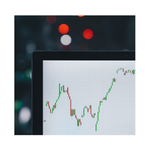Foreign Exchange Arithemetic Basics – Part I
foreign exchange Tags: Arithemetic, Basics, Exchange, Foreign, PartNo Comments »
The main objective of this session is to understand what is foreign exchange, how foreign exchange works.
Before knowing all of these we must understand the evolution of money.
First let us define what is money?
Money is a kind of legal tender acceptable by people or businesses of any country where it has been legalised and carries certain value in Numbers. It is used as official payment mode for exchange of any goods and services or to clear any debts within that country or within recognized countries.
How it is born?
In old ages before the paper currency is a norm, People used to exchange services and goods for other services and goods in return with a valuation is arrived during the transaction by parties involved.
For example, a dairy farmer would exchange one litre of milk with a gardener for one kilogram of apples. Although this concept was adequate at the time, it would be almost impossible to use this concept in modern times.
Now if the same farmer wanted to exchange milk for a new smartphone then not only will the farmer need a lot of milk but the farmer will also need to find someone who had a smartphone and wanted to exchange it for milk. This isn’t practically possible at all.
This Is where money comes into play. It’s a separate commodity that people can use to buy/sell any product. Money is used as a common denominator against which the value of all products can be measured.
Money as we know it today started to take shape around 2500 years ago, when the kingdoms of that age minted gold and silver coins to create their national currency.
In the 14th Century concept of banking is born and paper currencies got increased acceptance in the coming centuries.
After 1990, Internet Revolution is happened, thus, mobile banking evolved, but today we deal mostly in electronic transfers.
Here is the quick summary of the evolution of money
1. Barter System – Real value in goods exchanged
2. Metal Coinages – Equivalent value settled with Precious metals such as Gold and Silver
3. Paper Currencies – Backed by Governments with Gold and Silver as base to print those.
4. Electronic Money – Backed by Governments and Country’s central banks
5. CryptoCurrencies – Block chain based virtual currency and not backed by any governments.
Let’s get back to the topic now.
What is Foreign Exchange?
In general, Foreign exchange means converting a currency of one country to another country’s currency.
There are two primary reasons for these exchanges to take place namely,
1. Personal Transfers
2. Trade Transfers
But comparing to Trade transactions, personal transactions are too less. Hence trade between countries leads to rise in the foreign exchange.
Usually foreign trade is transacted in either of the exporter or importer’s currency. In any trade the exporter will be supplying goods or services and the importer would be making payments. In case the trade is happening between businesses located in different countries, the seller would like to get his payment in his country’s currency and the buyer would like to settle the bill in his own currency. That’s where foreign exchange is required.
Thus, Foreign exchange is a natural association of foreign trade.
Basic of Foreign exchange
There are three fundamental aspects to the foreign exchange mechanisms.
1. Almost every country has its own currency. Barring a few currencies like USD, EUR all other were mostly accepted within that country only.
2. Most of the exchanges are carried out by banks by bookkeeping entries in different centres.
3. Banks/FIs mostly use credit instruments like Forward cover to effect the exchange transactions.
Forex Market in India
The forex market is the largest financial market in the world, trading around .5 trillion each day.
. The international scope of currency trading means that there are always traders across the globe who are making and meeting demands for a particular currency.
The main reason behind this is the restriction on free flow of capital into or out of the country.
Direct and Indirect Quotes
In General Currency quotations are made in two ways
1. Direct Quote
The quote is direct when the price of one unit of foreign currency is expressed in terms of domestic currency.
2. Indirect Quote
The quote is indirect when the price of one unit of domestic currency is expressed in terms of foreign currency.
Since the US dollar (USD) is the most dominant currency, usually, the exchange rates are expressed against the US dollar.
A lower exchange rate in aim plies that the domestic currency is appreciating in value. Whereas, a lower exchange rate in an indirect quote indicates that the domestic currency is depreciating in value as it is worth a smaller amount of foreign currency.
In a direct quotation, the foreign currency is the base currency and the domestic currency is the counter currency. In an indirect quotation, it’s the other way around. The domestic currency is the base and the foreign currency is the counter.

































































